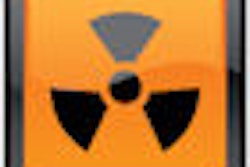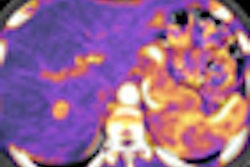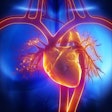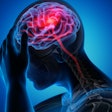It's not for nothing that CT is able to maintain its star status at the RSNA show year after year. Extraordinary flexibility in head-to-toe imaging applications, combined with rapid technological advancement, make CT the modality to beat once again in 2009.
This year's Chicago meeting will highlight several powerful technical innovations that are making their way into clinical use, including fast high-pitch scanning to stop motion cold, rapid perfusion scanning to peer into organ function, and ultralow-dose just about everything to protect patients who are undergoing an ever-increasing number of CT procedures.
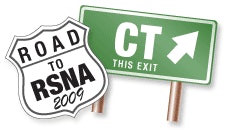
In any case, concerns about radiation dose have spurred a response from developers and clinicians that has been nothing short of revolutionary. Everywhere and for every application, CT protocols are being scrutinized for lower-dose alternatives, standardized to stamp out high-dose outliers, and managed with increasingly accurate and easy-to-use methodologies. Throughout the industry, technology is turning lemons to lemonade with high-quality images squeezed from the lowest possible dose.
At this year's meeting, for example, learn how South Korean researchers have crisscrossed the country to establish the PREDICT (Patient Radiation Exposure and Dose in CT) database to standardize a wide range of protocols for monitoring dose trends nationwide (November 30, 3:30 p.m.-3:40 p.m., SSE22-04, Room S403B). Researchers in Toronto found out they could throw out the rule requiring pediatric acute abdomen cases to be x-rayed first, by substituting ultralow-dose CT that finds common conditions with the same low dose (December 1, 10:50 a.m.-11:00 a.m., VE31-09, Room S103CD).
On the technology side of dose reduction, Chicago investigators used 256-detector-row CT to squeeze virtual colonoscopy dose down to 2 mSv -- with no ill effect on results (November 29, 12:05 p.m.-12:15 p.m., SSA08-09, Room E353A). And here's a first: Radiologists in South Carolina are using software and second-generation dual-source CT to provide the low-dose benefits of prospective heart scanning to patients with arrhythmias (November 30, 11:10 a.m.-11:20 a.m., SSC01-05, Room S502AB).
High-pitch dual-source imaging is another way to speed imaging tasks at the lowest possible dose. A study from Rochester, MN, suggests that infants can squirm and scream all they want and still produce crisp images without sedation and with little radiation (December 2, 3:10 p.m.-3:20 p.m., SSM19-02, N230). Researchers in Erlangen, Germany, confirmed that heart scanning at high pitches cuts the dose and improves image quality (December 1, 11:10 a.m.-11:20 a.m., SSG18-05, Room S403AB).
Providers are cutting the contrast dose, too, using 320-detector-row volume CT for peripheral vascular imaging. Runoff CT angiography studies used far less contrast than normal, opening the door for peripheral arterial disease evaluation, even in patients with renal insufficiency (December 1, 11:20 a.m.-11:30 p.m., SSG21-06, Room E353B).
Coronary artery calcium maintained its relevance in 2009 too. Among the many studies in this field, researchers in Ireland found a relationship between osteoporosis and increasing coronary calcium, and recommended screening for both conditions (December 1, 11:20 a.m.-11:30 p.m., SSG21-06, Room E353B). And that's just for starters.
Refresher courses to explain the really important stuff are also in the lineup, including a session on obstructive lung disease (November 29, 2:00 p.m.-3:30 p.m., RC101, Room E353B). The fast-evolving technique of CT brain perfusion imaging is also highlighted in a Sunday session (November 29, 2:00 p.m.-3:00 p.m., RC105A, Room S406A). Technique optimization for fast and reliable CT angiography will be presented on Monday (November 30, 8:30 a.m.-10:00 a.m., RC212, Room N229). Tuesday will feature a categorical course on virtual colonoscopy (also known as CT colonography or CTC) (December 1, 8:30 a.m.-10:00 a.m., RC309, Room E450A).
A plenary session on early diagnosis of lung cancer (November 29, 10:45 a.m.-12:15 p.m., PS31, Room E353C) rounds out the CT offerings with discussions of the state of the art in screening, current controversies, and, finally, treatment options for lung cancer.
A scroll down will show you some of the scientific sessions that caught our eye. You can fine-tune your schedule at the RSNA's conference Web site.





